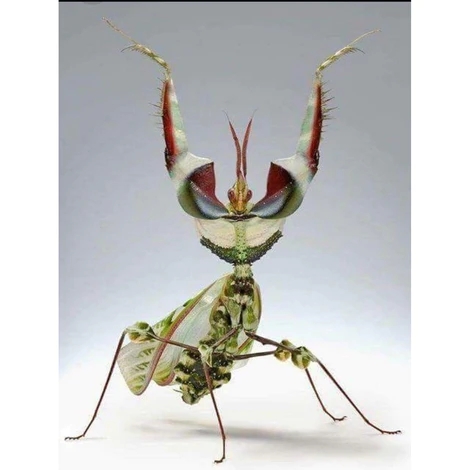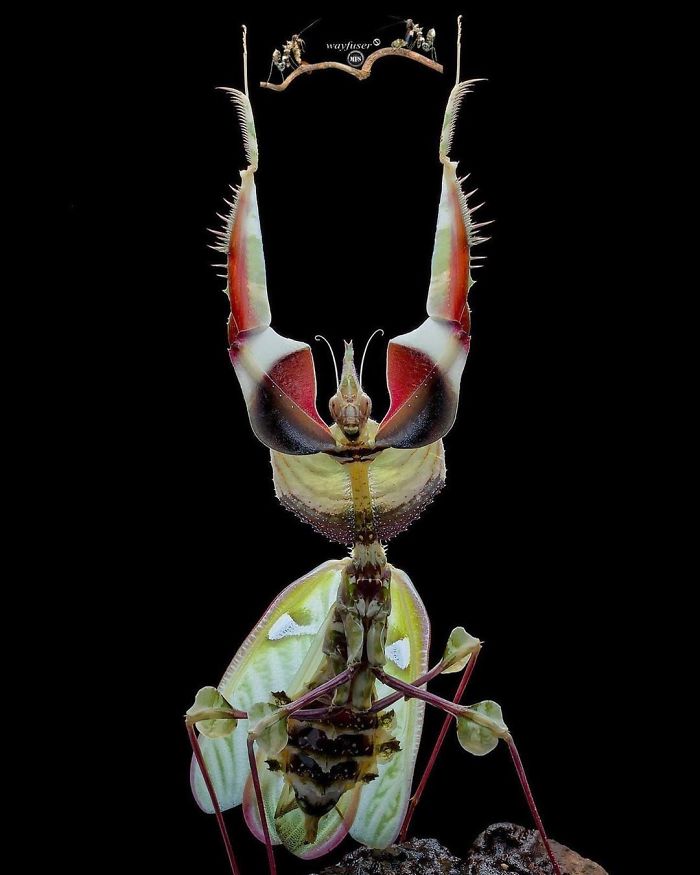The San are the oldest inhabitants of Southern Africa, where they have lived for at least 20 000 years. See also: SAN PEOPLE: THE WORLD MOST ANCIENT RACE
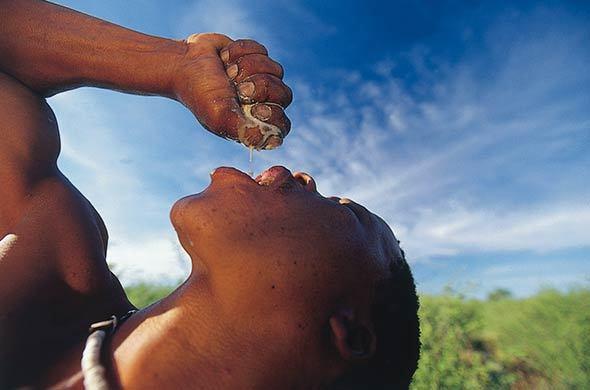
The term San is commonly used to refer to a diverse group of hunter-gatherers living in Southern Africa who share historical and linguistic connections. The San were also referred to as Bushmen, but this term has since been abandoned as it is considered derogatory. There are many different San groups – they have no collective name for themselves, and the terms ‘Bushman’, ‘San’, ‘Basarwa’ (in Botswana) are used. The term, ‘bushman’, came from the Dutch term, ‘bossiesman’, which meahttps://maypoleofwisdom.com/san-people-the-world-most-ancient-race/nt ‘bandit’ or ‘outlaw’.
The Bushman or San people of Africa have a fascination for the Praying Mantis and love this small insect. The mantis created many things and appears in numerous myths. He can be foolish, wise or helpful, The Koi San people of Southern Africa worshipped the praying mantis. They believed that he gave them words and fire.
As they are also small people they appreciate the Mantis’ place in nature. Although, whenever they walk on the African landscape and feel ’the animal eye upon them’, it was the small Mantis that they worship and neither of the Big Five. They converse and weave stories about the Mantis, see things through its eyes and learn to value the little things in life.
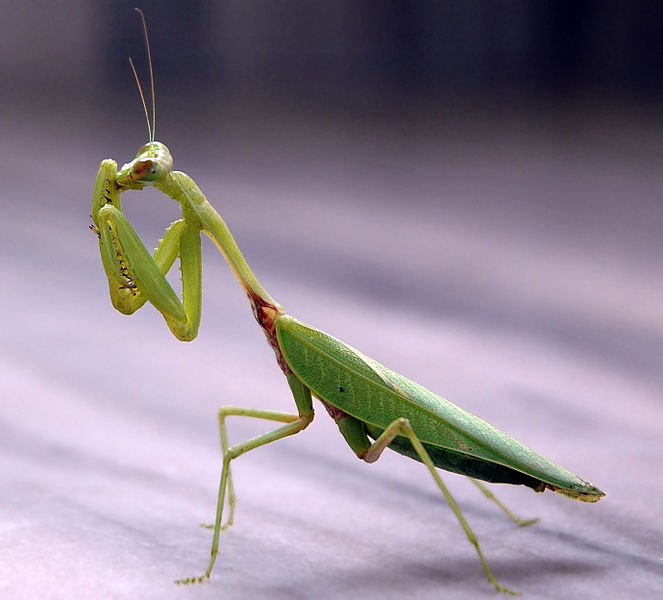

Although Mantis is a type of San ‘super-being’, the Namibian San / Bushmen do not regard him as a god, like the moon and sun. Indeed, he is all too human and in many ways personifies the San himself.




He is a kind of dream Bushman, and resembles the real mantis, with his small wedge-shaped face and intelligent look. The figures which primitive artists painted on the walls of their rock shelters, prance along like Mantis himself. Mantis is very much a family man and likes to have his folk around him.

His wife is Dassie, the rock hyrax. His son is young Mantis, very like his resourceful father.
Then there is Porcupine who is an adopted daughter, whose real father is a weird monster called the All-Devourer, with whom she is too frightened to live.

Porcupine is married to a being who is neither human nor animal, but a part of the rainbow, called Kwammanga.

They have two sons, one called Kwammanga after his father, and the other Mongoose or, as he is sometimes known, Ichneumon.

The latter is a bossy young character who is always putting his grandfather Mantis in his place.
Mantis also has a sister, a lovely lady called Blue Crane, of whom he is most fond.

So, this is the family of Mantis, and not all that strange a family, if compared to some human families

Praying Mantis – Patience and Wisdom

Follow Mantis
To “Follow Mantis” means to honor your true nature, your highest self – and let it direct you. When a praying mantis comes to visit, its message may be one of a spiritual nature. Mantis asks that we take a moment to pause, reflect, and become aware of our surroundings. Has life gotten a little out of hand? Feeling overwhelmed? Gaze into the eyes of a praying mantis and let him/her teach you how to still the mind and go within.
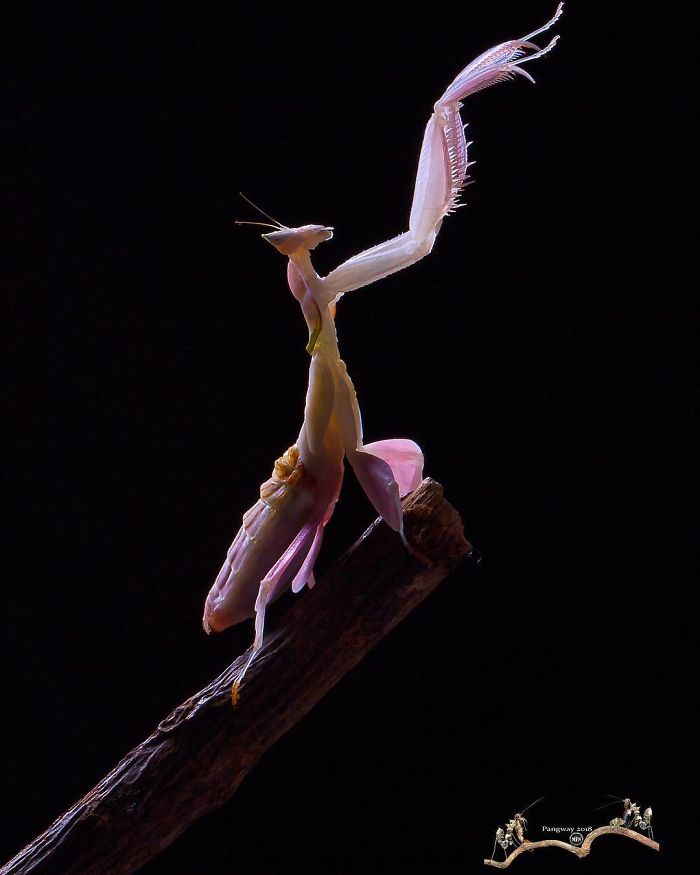
The First Bushman

Water in a desert country is so precious that for those who depend on it, it can assume divine properties. To the Bushman water is the ancient symbol of life. In it he can revitalize himself an make a fresh start. His legendary hero, Mantis, appears at the time of the beginning of the world, when the face of the earth was covered with water.



Mantis was carried over the tumult of the dark and turbulent water by a bee (bees, as honey makers, are an image of wisdom). The bee, however, became warier and colder as he searched for solid ground and Mantin felt heavier and heavier. He flew slower and sank down towards the water. At last, while floating on the water, the bee saw a great white flower, half-open, awaiting the sun’s first rays. He laid Mantis in the heart of the flower and planted within him the seed of the first human being. Then the bee died. But as the sun rose and warmed the flower, Mantin awoke and there, from the seed left by the bee, the first Bushman was born.


Mantis, Ostrich and Fire
In addition to life, Mantis also brought the first fire to the people. Before this, they ate their food raw, just as they killed it, like the leopard and the lion, and they slept in their shelters at night, with no cheering light to brighten the long dark hours.
Mantis had noticed that whenever Ostrich went to eat, his food smelt different and delicious. So one day he crept close to Ostrich to observe him as he ate. He saw Ostrich furtively take some fire from beneath his wing, and dip his food into it. When he had finished eating, he carefully tucked the fire back under his wing, and walked off.



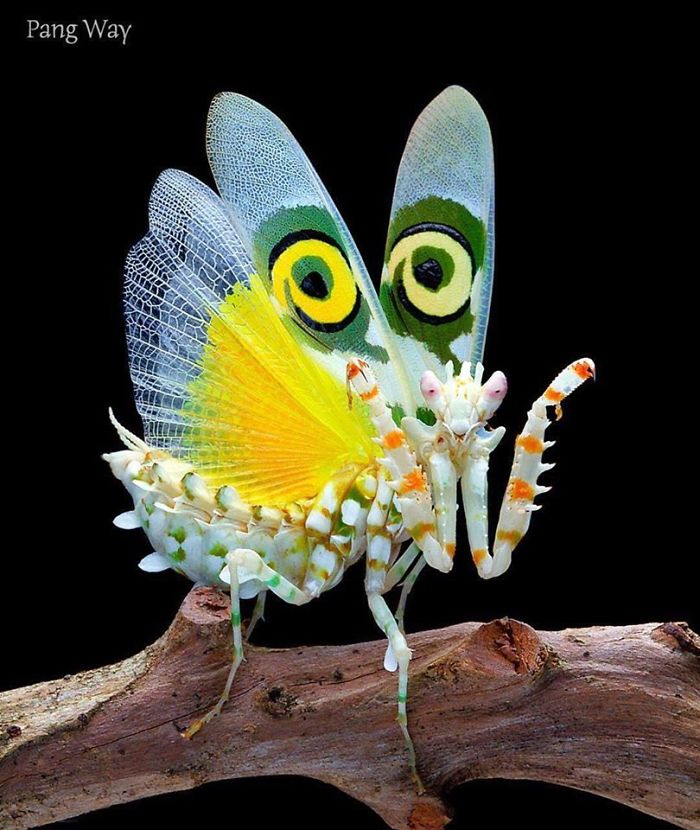
Mantis knew that Ostrich would not give him any fire, so he decided to make a plan. One day he went to visit Ostrich. ‘Come,’ he called, ‘I have found a tree with delicious yellow plums on it.’ Ostrich was delighted. He began to eat the plums that were easiest to reach. ‘No, higher, higher! The best ones are right at the top,’ Mantis urged him.
As Ostrich stood up on tiptoe and spread his wings to balance himself, Mantis snatched some of the fire from beneath his wing and ran off with it. This was how he brought fire to the Bushmen. Since then, Ostrich, terribly ashamed, has never flown and keeps his wings pressed to his sides, to preserve the little fire he has left. According to the Bushmen, the ostrich has always been rather an odd fellow. When the female makes her nest in a hollow in the warm sand, she lays 20 to 30 round, creamy eggs, but invariably leaves one outside. Why?
Because she and her husband are so busy brooding on the theft of their fire, that they can be very absent minded. She is even liable to forget she is sitting on a clutch of eggs, and so she puts one the outside of the nest, just to remind herself and her husband, that they have eggs in the nest..

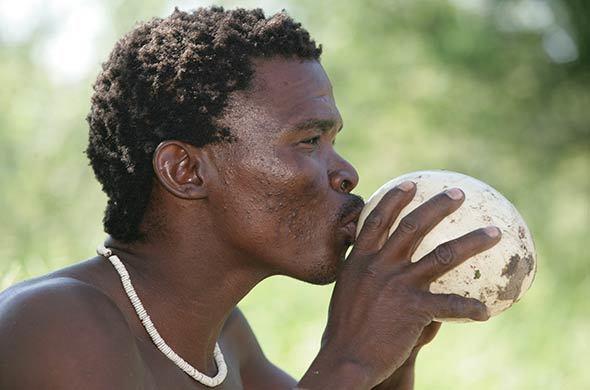
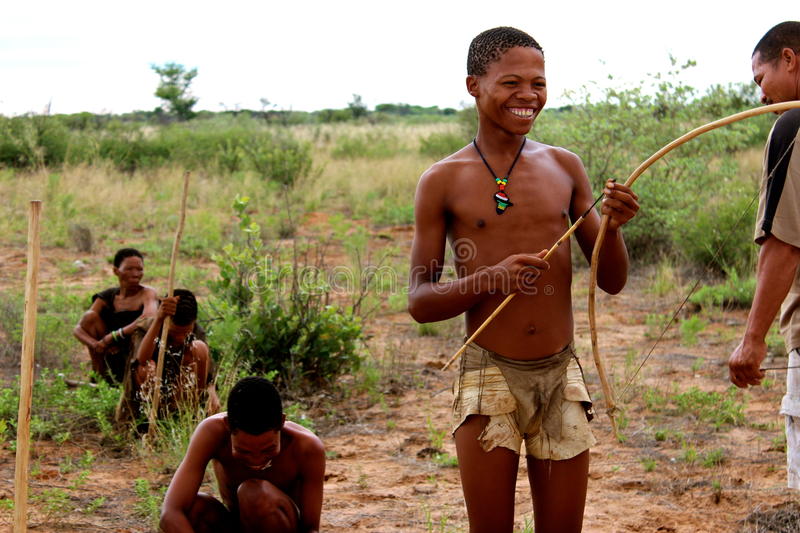

The mantis, the eland and the meerkats
The /Xam were a southern San (Bushman) group living in the central Cape Colony, South Africa. Prominent among the /Xam myths recorded by the philologist Wilhelm Bleek in the 1870s is a series of episodes concerning the adventures of the Mantis (/Kaggen), the southern San trickster-deity. The principal episodes include the Mantis’s creation of the Eland from a shoe, the death of the Eland, the Mantis’s fight with the Meerkats (suricates: small furry mammals), and the Mantis’s creation of the moon. At the heart of the myth lie the negotiation of social relations between affines and a specific conflict resolution mechanism. This mechanism was brought into play to deal with internal social stress in the years of contact with Bantu-speaking agropastoralists and, later, white settlers. To provide an understanding of the functioning of this mechanism, the author first briefly outlines the cosmological stage on which many southern San myths were played out and the kinship relations within the Mantis’s family. He argues that the performances of ‘The Mantis, the Eland and the Meerkats’, especially those in which the narrator developed the shamanic episodes, served to reproduce acceptance of the key role of shamans in coping with social tensions and was one of the ways in which shamans consolidated and increased their power.

THE MANTIS, THE ELAND AND THE MEERKATS myth
The Mantis stole /Kwammang-a ’s shoe and put it into a waterhole. When /Kwammang-a missed his shoe, he asked his wife, the Porcupine (the Mantis’s adopted daughter), about it. She replied that she knew nothing about the matter.
Then, at the waterhole, the Mantis made an Eland out of the shoe and fed the animal on honey that he should have taken home to his family. /Kwammang-a was angry when he missed his shoe, and he told his son, the young Ichneumon, to spy on the Mantis to see what he was doing with the honey.
The next day, the Ichneumon accompanied the Mantis, and, whilst pretending to sleep beneath a kaross, he saw him call the Eland out of the waterhole. When the Eland came up to the Mantis, he wetted the animal’s hair and smoothed it with honey. When the Ichneumon saw this, he jumped up and cried out, “This is the creature who is eating the honey! The Eland is drinking the honey!’ The Eland went back into the reeds, and the Mantis and the Ichneumon returned home. The Ichneumon told /Kwammang-a what he had seen and said that /Kwammang-a should collect honey and take it to the waterhole. Then, if he moistened the honey and called, he would see the Elands He did so, calling out what the Ichneumon had told him to call:
‘/Kwammang-a’s shoe’s heel!’ The Eland jumped out of the reeds and trotted up to /Kwammang-a. As it drank the water and the honey, he shot it. It sprang back and ran off to die.
Later, the Mantis went to the waterhole and found that his Eland was no longer in the reeds; he wept. He saw blood on the ground. He returned home. Meanwhile, /Kwammang-a went to Ki-ya-koe and the Meerkats, and together they tracked and found the dead Eland. /Kwammang-a took his arrow out of the carcass and returned home. While the Meerkats were cutting up the Eland, the Mantis came and pierced open the Eland’s gall, thus angering the Meerkats. The meerkats then fought him and threw him on the Eland’s horns. The Mantis fled.
At home the Mantis lay down because his head ached. He trembled, and the tree on which the Meerkats had placed the Eland’s meat and their clothes came out of the ground, flew through the sky and came down near the Mantis’s head, thus making a shelter for him.
The Meerkats returned to their home naked, and the women asked them why they had brought home neither eland meat nor their quivers. Read more here

Way of the Bushman
Told in their own words, these teachings reveal how the Bushmen are able to receive direct transmissions of God’s love in the form of the universal life force, n/om. The individuals who are filled with this force describe it as an awakened, energized feeling of love that inspires a spontaneous and heightened ecstatic awareness that opens mystical perception. Having your heart transfixed by this force enables true healing and spiritual growth to occur. Experiencing the force in your entire being, through a vision of “God’s egg”, awakens deep spiritual wisdom and extraordinary healing gifts. Those who “own the egg” are blessed with the ability to have direct communication with the Divine, a “rope to God,” and can communicate with others for all “ropes” are connected.
Conveying the deep love that is the dominant emotion of Bushman spirituality, the book explores tribal legends and teaching tales, the importance of dreams and encounters with animals, the origins of their dances, such as the giraffe dance, and specific rituals and ceremonies, including puberty rites for boys and girls.
“As the elder teachers of the Ju’/hoan Bushman (San) people, we hold the most enduring traditional wisdom concerning healing and spiritual experience. This book is a testimony of our ecstatic ways. We happily share our basic teachings about spirituality and healing with those whose hearts are sincerely open.” Read here
“All africa within Us”
Sir Laurens van der Post tells his story about his first encounter with Africa after the War. Produced by Jonathan Stedall and filmed by Paul Bellinger for BBC Television ‘ World About Us’


The distinguished explorer and writer recounts his rediscovery of the Bushmen, outcast survivors from Stone Age Africa. Faced with constant attack from all the peoples who followed them, the last of the Bushmen have retreated to the scorching depths of the Kalahari Desert in southern Africa. After a gruelling trek, van der Post finds the Bushmen, thriving in one of the world’s most inhospitable landscapes, with their physical peculiarities, their cave art and their joyful music-making intact. Read Here



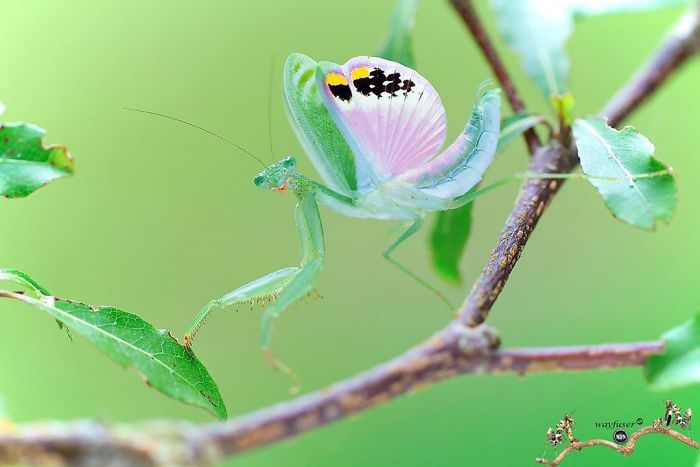


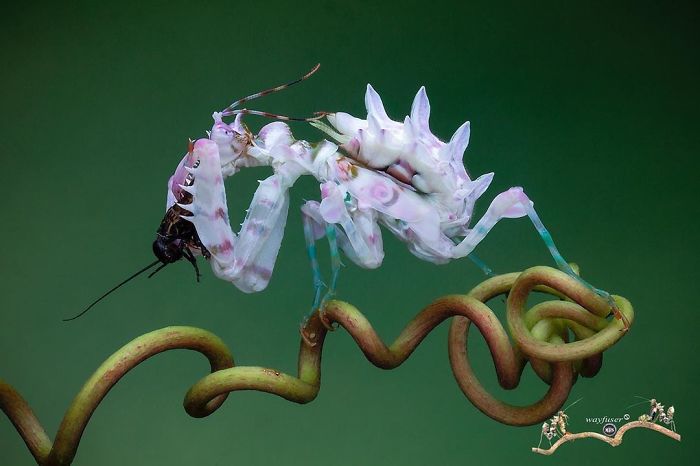

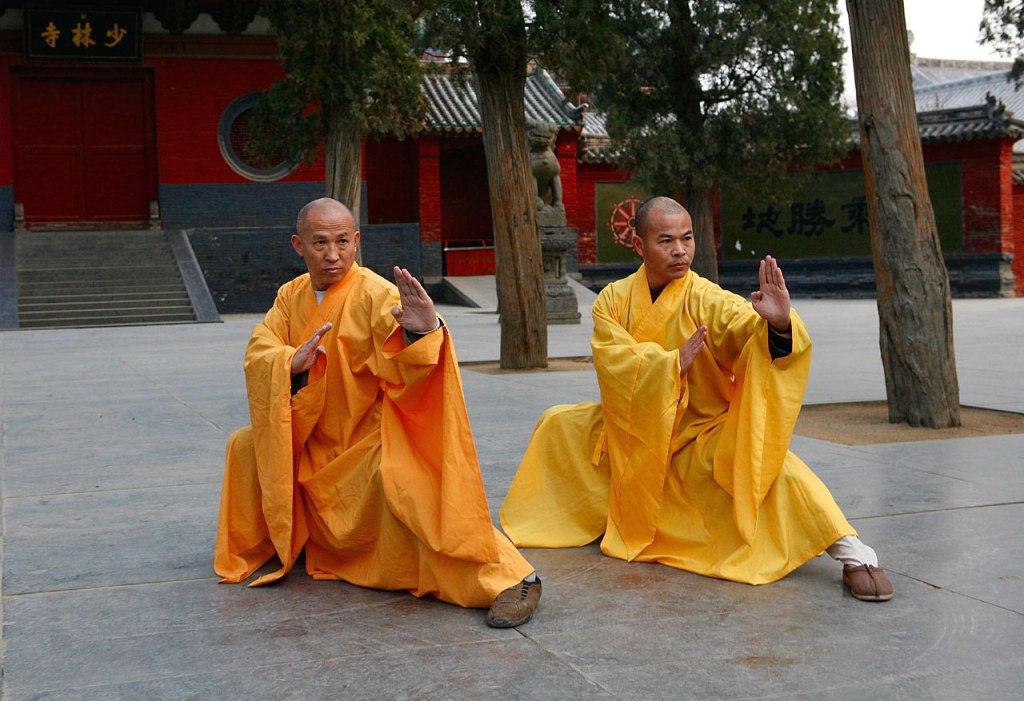
Southern Praying Mantis (Chinese: 南派螳螂) is a Chinese martial art originating with the Hakka people. It is most closely associated with Hakka-origin styles such as Southern Dragon Kung Fu and Bak Mei.



